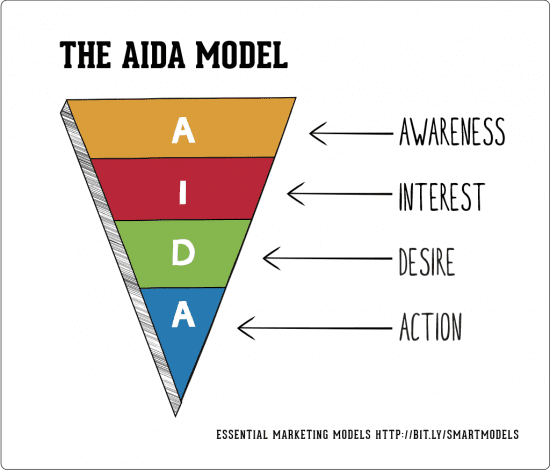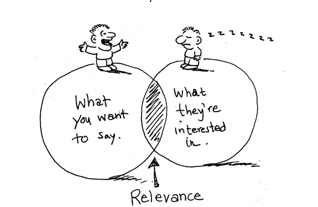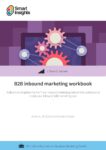Content Marketing is more than just publishing content...
When Doug Kessler (Velocity Partners) published his Slideshare ‘Crap: the single biggest threat to b2b content marketing’ it rightly got a lot of attention (one million views and counting).
[slideshare id=15931787&doc=velocitycrap-130110064100-phpapp01]
I think that the popularity of this Slideshare was not only because of the great title, but because it highlighted the challenge of getting cut-through as more B2B brands are spending more time on content marketing. Now B2B buyers cannot move for the flood of Ebooks, blog posts, and infographics (which are getting longer by the day!). According to the CMI:
74% of marketers say they are producing more content than they did a year ago, but 70% of content produced gets wasted each day!
From my experience of working with brands and training marketers on content marketing, there seems to be a common experience with initial adoption of Content Marketing. You know you need to be doing something, so you start on say, an e-book. Yet without a plan, defined objectives and a little insight to your buyers issues and pain points, success is limited and ROI will be difficult to define (which doesn’t help content marketing get buy in from the C suite). We know from this Smart Insights-HubSpot research that the majority of businesses don't have a content marketing strategy.
Towards a more structured approach to Content and Inbound marketing
To help provide a structure to follow based on my experience in B2B Inbound marketing projects, I've created a new Smart Insights template (available for expert members) that follows the 7 Step process Planning process outlined below, using a pre-built fill-in-the-gaps style document to use immediately.
Download resource – B2B Inbound Marketing Workbook
A blank Word template to complete for a more structured approach to content marketing - includes a completed B2B example.
Access the B2B inbound marketing workbook
Here is an outline of the 7 Steps we have defined in the template.
Step 1: Objective and Goals
Before you brainstorm your blog posts and next hero eBook topic, start by identifying the target numbers. How many leads do you need? What are your business objectives? What are your Key Performance Indicators?
If you are justifying this marketing strategy for your company, you need to show how it fits in with their overall goals and objectives, and that you will be working with KPIs to review and assess performance.
This stage is also important as you need to know what your sales conversion rates are. For example, if content marketing is to generate 20 sales and you convert 10% of all leads, your content marketing actually needs to deliver 200 leads on your website.
Step 2: Buyer Journey and Pain Points
You would have heard people say, write content that identifies with your prospects pain points. To get to this golden insight you need to have a good understanding of your customer summarised in Buyer Personas.
Consider the following:
- What does their buyer journey look like?
- What channels and forms of content do they touch from Awareness, Consideration and Decision?
- What questions will they ask at each stage?
- What keeps them up at night?
Focus on umbrella themes for your buyers and drill down into individual issues and problems that your product or service solves.
Step 3: Content Mapping: audit to the sales funnel
Before you jump into creating more content, have a look at what you already have. Do an audit, but map this to the sales funnel. This is going to show you gaps and priorities on what to start creating first, and will identify existing content that could be recycled or repurposed.

You should filter this using your personas and target audience insights to ensure you have content that matches their pain points. Also filter by sectors if that is relevant for your business.
Step 4: Budget
Before you jump into creating and hiring people to make your amazing content, how much budget do you have to play with? How much resource do you have with your team and staff?
Be realistic with what your budget can achieve, focus on creating content that fills your audit gaps, and recycle and repurpose what you can.
Tip: Don’t just allocate budget for the production, you are likely going to need budget to cover distribution of your content.
Step 5 : Ideas for content
With your budget in place and an idea of how much time you and your team can spend creating/managing the content marketing process, you can start to think about what content you are going to be creating.
Staring at a blank piece of paper can be daunting, so start by focusing on the missing items from your audit. Estimate how frequently you can create content from your budget. Plan the formats you will create content for, i.e. video, blog, ebook, and when you will do it, e.g. 1 per quarter, 1 per week.
Once you have this list, focus on the quick wins – what content can you repurpose and reuse? Do you have a number of blogs that could be made into a book? Do you have a PowerPoint from an industry event that could be turned into a blog pots?
 Successful content needs to be relevant and helpful to your buyer, and answer the questions they are asking. It also needs to hit them along the buyer journey in a “one of a kind way”, i.e. it shouldn’t appear anywhere else on the web, in what Rand Fishkin called Uniquely Valuable.
Successful content needs to be relevant and helpful to your buyer, and answer the questions they are asking. It also needs to hit them along the buyer journey in a “one of a kind way”, i.e. it shouldn’t appear anywhere else on the web, in what Rand Fishkin called Uniquely Valuable.
To be ‘Uniquely Valuable’ your content needs to be:
- A massive upgrade in aggregation, accessibility, and design,
- Information that is not available anywhere else,
- Presented in a clearly different voice or style
To help come up with your ideas, I use this formula. Source + Theme + Format + Idea = Engaging Content
- Source = curated, created, co-market, or recycled
- Theme = your buyers pain points and issues
- Format= video, checklist, case study, ebook, reports, podcasts
- Idea= debates, how tos, news article, top 10s , interviews
Step 6: Promotional Plan
As should now be obvious, content marketing needs a lot of time and resources. Aside from the time and effort you need to invest up front, your content will need continued investment once it’s ready. You need to sell it!
Having a good understanding of your marketing performance across your earned, owned and paid media is crucial for this planning phase. Work out how many visits your blog has; what is the average CTR to a landing page? How many people do you have on social, and what is the average traffic to your landing page? If you have gated content, what is the conversion rate for your landing pages?
Tip: Have a detailed promotional plan in place to support your marketing efforts and highlight what you realistically need to do in order to hit your desired outcomes.
Step 7: Implementation
So, you’ve made it to the end of the process and you’ve done all of the following:
- Set out and validated realistic objectives of how to reach your business goals
- Understood your audience’s pain points
- Planned how you will structure your message along the journey
- Audited your content stock to highlight your gaps and quick wins to focus on
- Charged up your team with possible ideas
- Put a budget and promotional plan in place
Now, you have to do it!
This is where your operational and editorial plans are key to identifying who is going to do what, by when, giving time to approve, produce and promote your content.





 Successful content needs to be relevant and helpful to your buyer, and answer the questions they are asking. It also needs to hit them along the buyer journey in a “one of a kind way”, i.e. it shouldn’t appear anywhere else on the web, in what
Successful content needs to be relevant and helpful to your buyer, and answer the questions they are asking. It also needs to hit them along the buyer journey in a “one of a kind way”, i.e. it shouldn’t appear anywhere else on the web, in what 


